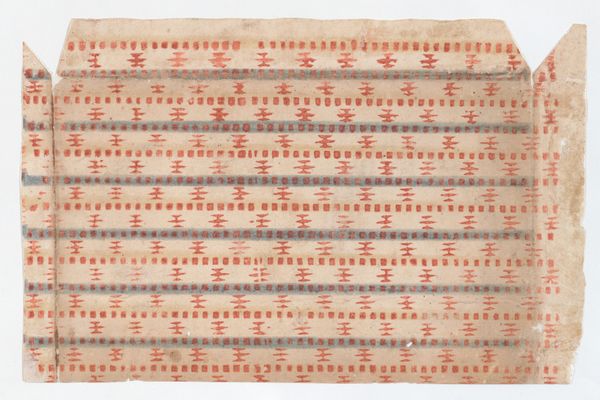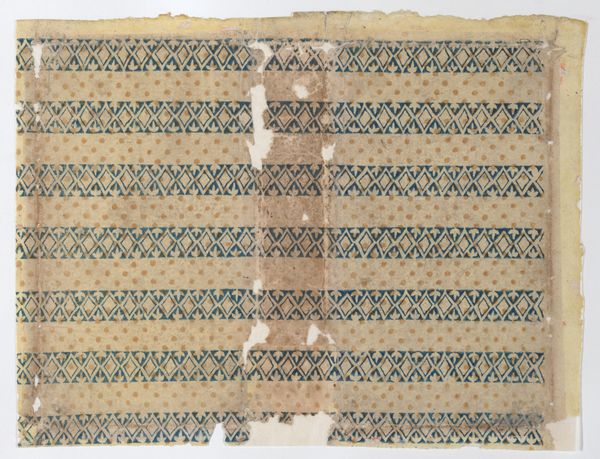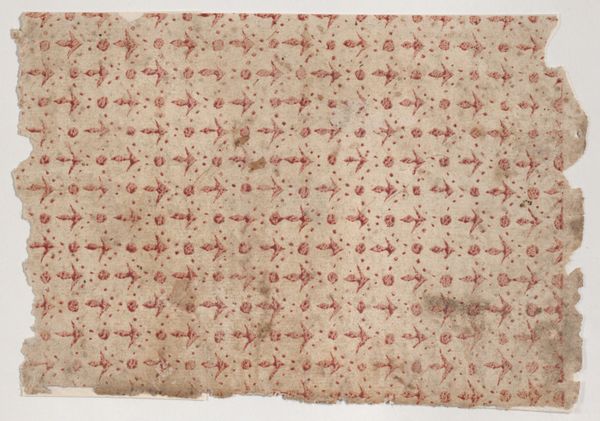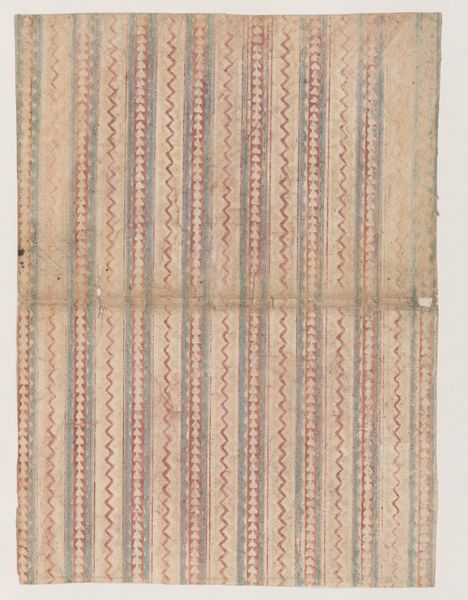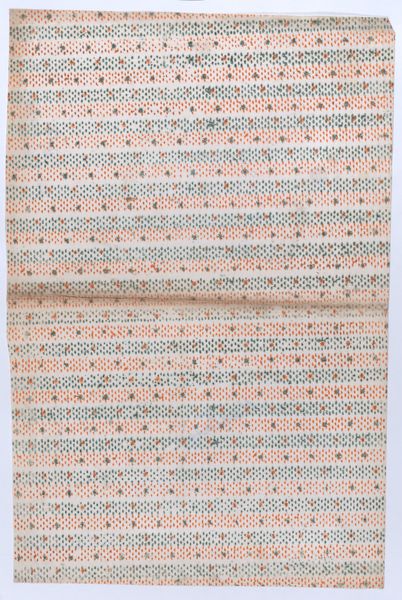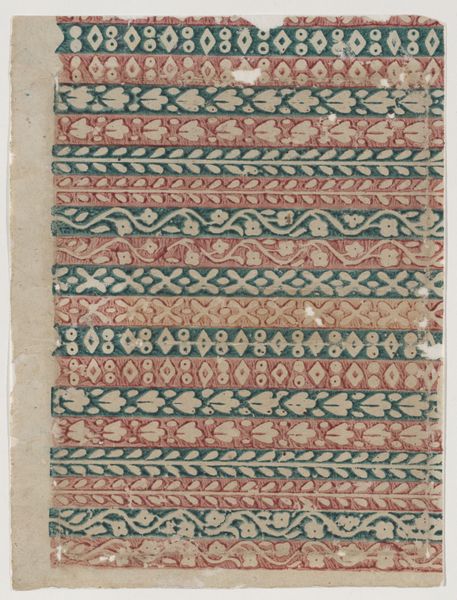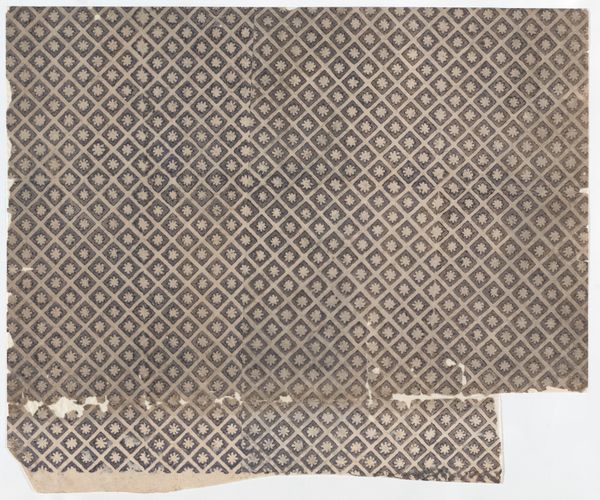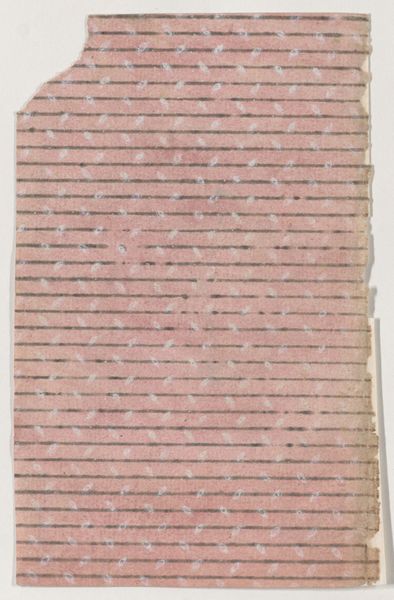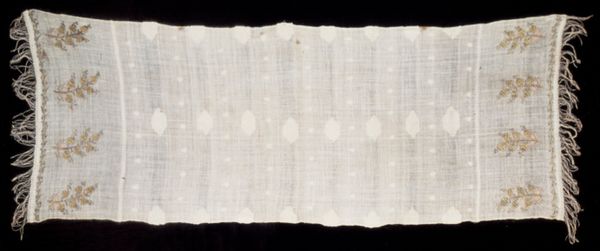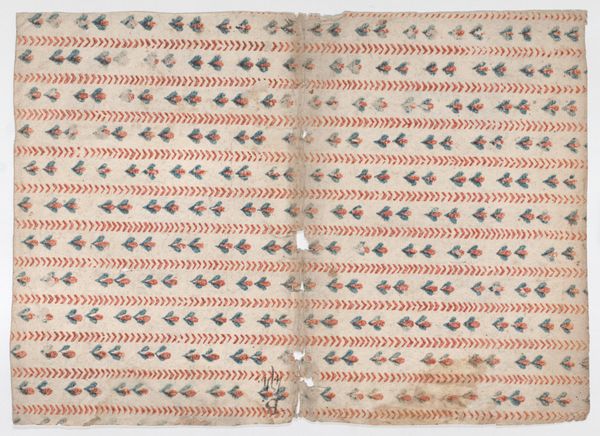
Sheet with overall red and blue geometric pattern 1800 - 1900
0:00
0:00
drawing, print, textile
#
drawing
# print
#
textile
#
abstract pattern
#
repetitive shape and pattern
#
geometric
#
regular pattern
#
decorative-art
#
imprinted textile
Dimensions: Sheet: 4 7/16 × 8 1/2 in. (11.2 × 21.6 cm)
Copyright: Public Domain
Curator: This captivating piece, currently residing at the Metropolitan Museum of Art, is simply titled "Sheet with overall red and blue geometric pattern." It dates back to somewhere between 1800 and 1900. Editor: It has a strangely comforting feel about it. A rudimentary pattern with an overall mood of a time-worn folk art. A repetitive rhythm that’s very easy on the eyes. Curator: Precisely. It invites consideration of textiles' historical role as storytellers, particularly through repeated motifs, acting as a visual memory bank for entire communities, especially in the absence of writing. The very regularity here evokes ritualistic repetition, perhaps echoing domestic life or artisanal practices. Editor: From a material perspective, consider the production. Block printing, perhaps? Or some similar technique to transfer these patterns. The labor, the handiwork is self-evident. The "regular pattern," as you call it, speaks to something systemized, perhaps made in multiples – hinting at a small-scale manufacturing setup. And this particular fragment—I wonder about its utility. Curator: The colors, red and blue, could signal distinct affiliations or purposes. Given its probable era, it might subtly communicate about the social environment in which it was created and disseminated. These geometric forms themselves have appeared repeatedly across civilizations in myriad ways – triangles and circles, suggestive of building blocks, wholeness, movement. Editor: Absolutely. And look at the irregularity – slight smudges, color variations, all a testament to process. These deviations pull you into the creator's immediate setting and time of work. The very nature of textile printing is indexical; this means these materials may carry all the imperfections of the press that made them. Curator: Considering our era, saturated with fleeting digital images, the persistent presence of patterns such as these – embedded deeply within diverse cultures– becomes poignant, reflecting humankind's timeless impulse to locate structure, sequence, and equilibrium within apparent disarray. Editor: To me, the piece foregrounds the crucial labor in textile making and asks critical questions around production. Its simplicity underscores value outside conventional ‘high art.’ The process itself—the selection of dyes, cloth, the wear-and-tear over time–reveals so much about consumption, use, and history. Curator: A simple image which has so much more to tell, inviting a wider appreciation of the history of its visual signs. Editor: An anonymous and rather modest piece of cloth prompts considerations of the everyday labor that shapes society. Intriguing indeed!
Comments
No comments
Be the first to comment and join the conversation on the ultimate creative platform.

